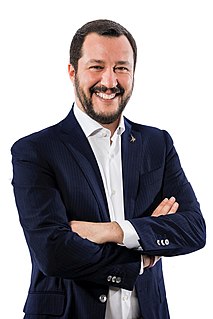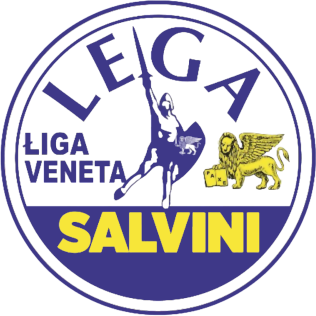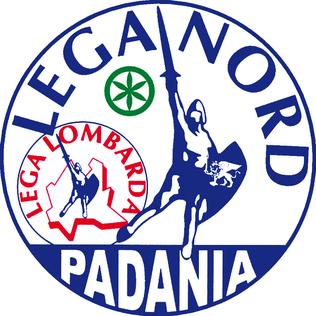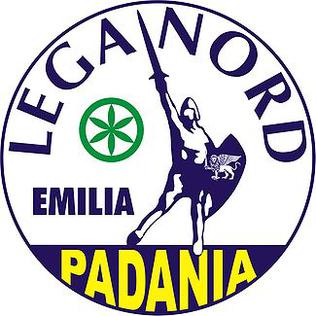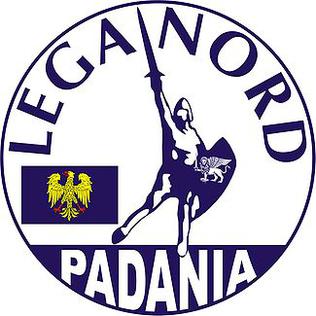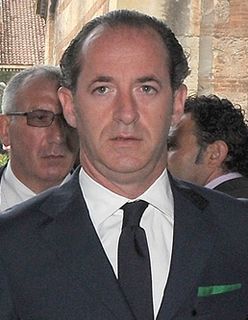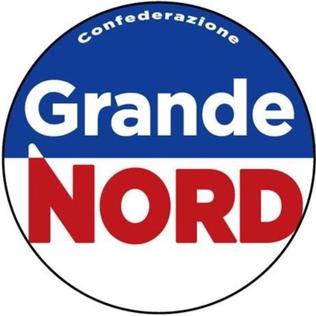A request that this article title be changed to Lega (Italy) is under discussion. Please do not move this article until the discussion is closed. |
Lega per Salvini Premier | |
|---|---|
 | |
| Secretary | Matteo Salvini |
| Deputy Secretaries | |
| Founded | 14 December 2017 [1] |
| Preceded by | Lega Nord Us with Salvini |
| Headquarters | Via Carlo Bellerio 41, Milan [2] |
| Youth wing | Youth League |
| Ideology | Right-wing populism [3] Conservatism [4] [5] Nationalism [6] [7] [8] [9] Regionalism [3] Federalism [6] Euroscepticism [10] |
| National affiliation | Centre-right coalition |
| European affiliation | Identity and Democracy Party |
| European Parliament group | Identity and Democracy |
| Colours | Blue (official) Green (customary) |
| Chamber of Deputies | 133 / 630 |
| Senate [11] | 62 / 315 |
| European Parliament | 24 / 76 |
| Conference of Regions | 5 / 21 |
| Regional Councils | 219 / 897 |
| Website | |
| www | |
Lega per Salvini Premier (English: League for Salvini Premier; abbr. LSP or LpSP), commonly known as Lega (English: League), is a right-wing populist political party in Italy, led by Matteo Salvini. The LSP was founded in December 2017 as the sister party of Lega Nord (English: Northern League, LN) and as a replacement of Us with Salvini, the LN's previous affiliate in central and southern Italy. The LSP extended the values and policies of the LN from northern Italy to the rest of the country and some political commentators have described it as a parallel party of the LN, with the aim of politically replacing it, also because of its statutory debt of €49 million. [12] [13] [14]
Contents
- History
- Background
- 2020 regional elections
- Draghi national unity government
- Political position and alliances
- Ideology, platform and factions
- Political communication
- Regional and local government
- Electoral results
- Italian Parliament
- European Parliament
- Regional Councils
- Leadership
- Symbols
- References
- External links
The League is one of the largest parties in Italy: it came third in the 2018 general election and first in the 2019 European Parliament election. Like the LN, the LSP is a confederation of regional parties, of which the largest and long-running are Liga Veneta and Lega Lombarda. Despite misgivings within the party's Padanian nationalist faction, the power base of the LSP is in northern Italy, where the party gets most of its support and where it has maintained the traditional autonomist outlook of the LN, [15] especially in Veneto [16] and Lombardy, [17] the party's main strongholds.
Since February 2021, the League has been part of the coalition supporting Mario Draghi's national unity government and has provided three ministers, led by the party's deputy secretary Giancarlo Giorgetti, minister of Economic Development. The party also participates in 15 regional governments, including those of the two autonomous provinces, and counts five regional presidents, notably including Attilio Fontana (Lombardy), Luca Zaia (Veneto) and Massimiliano Fedriga (Friuli Venezia Giulia), who is also the president of the Conference of Regions and Autonomous Provinces.






